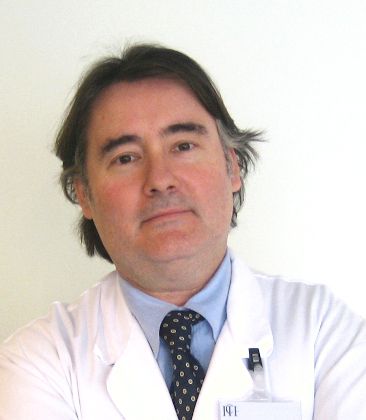Breast cancer is a disease caused by the uncontrolled division of the mammary gland cells and their evolution into malignant cells. Breast cancer has a particularly high incidence: in Italy, for instance, it affects on average one in nine women.
Cancer research is essential to finding new ways of treatment, which is why Humanitas Research Foundation has launched a non-profit trial, coordinated by the Humanitas Breast Unit, which will engage over twenty research centers throughout Italy.
We talked about it with the study coordinators: Dr. Corrado Tinterri, Head of Humanitas Breast Surgery department and Professor Marta Scorsetti, Head of Humanitas Radiotherapy and Radiosurgery department.
The NEONOD 2 study: the patients
The study, called Breast cancer T1-T2-T3 / cN +: preservation of axillary lymph nodes in the presence of micro-metastases in the sentinel lymph node if cN- after neoadjuvant chemotherapy – NEONOD 2 study, was launched in 2020. The research is expected to last eight years: three years for patient recruitment and five for follow-up, and will involve 850 patients aged 18 – 75 with a primary diagnosis of breast cancer with infiltrating histotype (i.e. invasive of surrounding tissues) and positive axillary lymph nodes.
The NEONOD 2 Study is the first multi-center project in Europe that evaluates the impact of preserving lymph nodes with minimal tumor residue after neoadjuvant chemotherapy: doctors expect to gain valuable information on the impact of different types of therapies on this type of cancer. Patients, in order to be eligible for the trial, must be free of distant metastases and have a negative history of previous infiltrating neoplasms. What is more, patients must have received neoadjuvant systemic treatment (prior to surgery) and have obtained a negative result on radiologic analysis of the lymph nodes.
The role of the lymph nodes
Lymph nodes, or lymphatic glands, are small organs located along the lymphatic tracts; they have a way of entry, letting in the lymph coming from the tissues, which may also contain foreign substances and immune system cells, as well as a way out. In the lymph node, the cells of the immune system attack potential aggressors, pouring afterward into the blood. The increase in the number of immune system cells within the lymph node can cause it to swell. Generally, this phenomenon is caused by inflammation in the area drained by the lymph node, but it can be a sign of a tumor in certain cases. In the cases of breast cancer, we refer to this phenomenon as positive axillary lymph nodes. Cancer cells can also colonize other areas of the body through the lymphatic system and blood pathways, thus giving rise to metastases.
The axillary lymph nodes and their removal
Removal of the axillary lymph nodes, when necessary, often causes a subversion in the normal outflow of lymph from the arm to the body and in 20-40% of cases causes varying degrees of lymphedema (swelling), which often remains permanent, with severe discomfort, pain, and secondary infections for the patients.
The objectives of the NEONOD 2 study
The research in question is an observational clinical study aimed at verifying whether the omission of surgery and/or radiotherapy on the axillary lymph nodes for patients that have achieved a complete or almost complete pathological response (residual lymph node micro-metastases) to systemic neoadjuvant treatment does not lead to a significant worsening in the survival or the risk of cancer recurrence. Yet, for patients with more than three micro-metastatic or macro-metastatic sentinel or para-sentinel lymph nodes (i.e. those lymph nodes infiltrated first by the lymphatic drainage of the tumor), the specialists will proceed with the surgical route with traditional axillary dissection. As for the tumor itself, the patients will undergo surgery, which may be, depending on the clinical picture, conservative or complete.
Doctors will also diversify post-surgery follow-up according to the clinical picture of the individual patient, which may involve interruption of treatments, complementary radiotherapy, or adjuvant medical therapy, such as hormone therapy or biological therapy.



